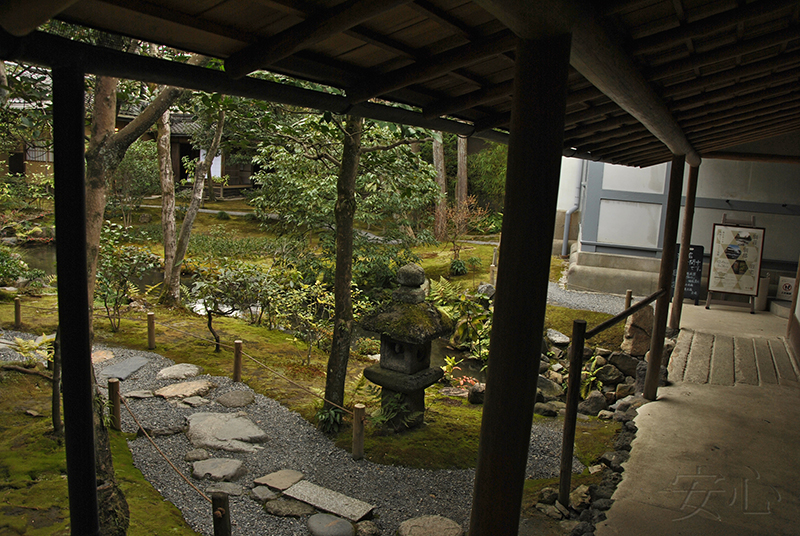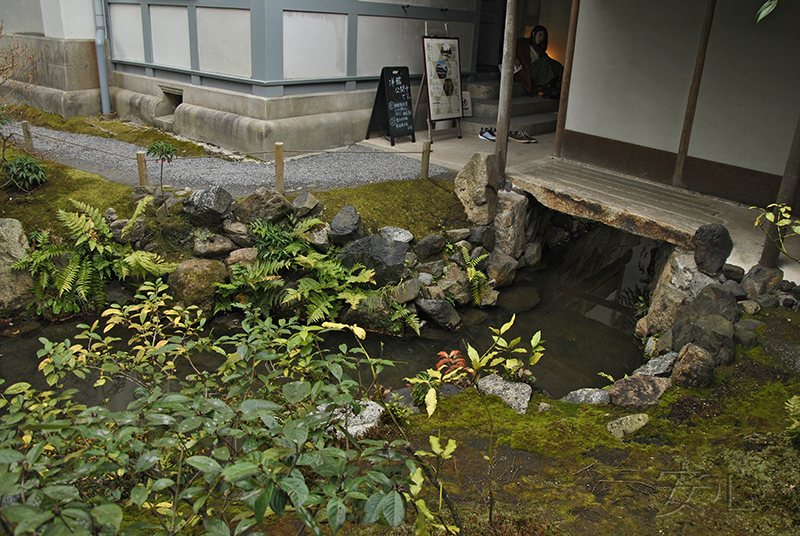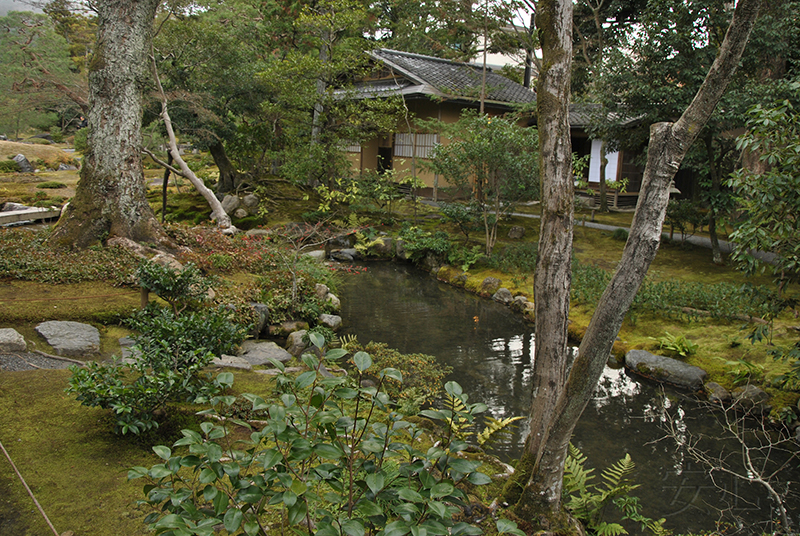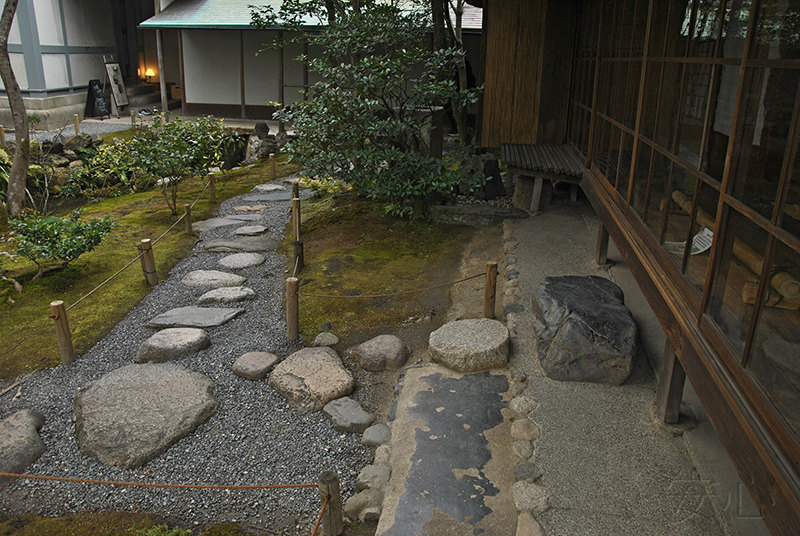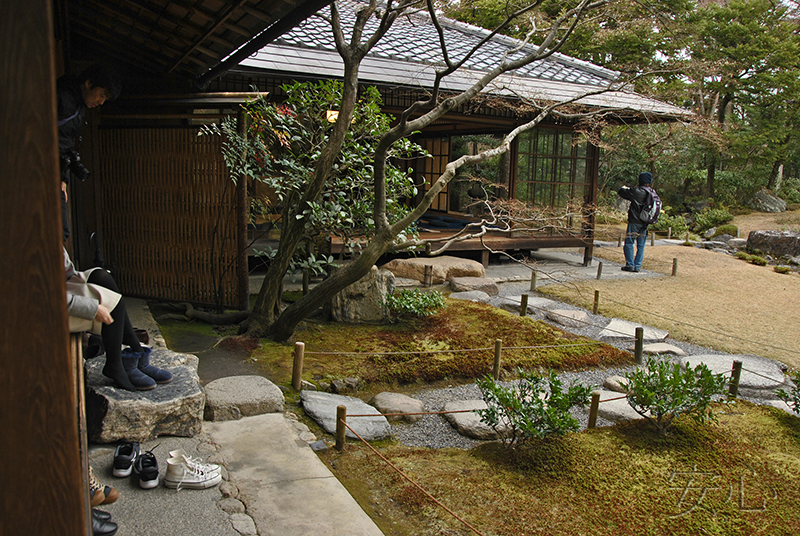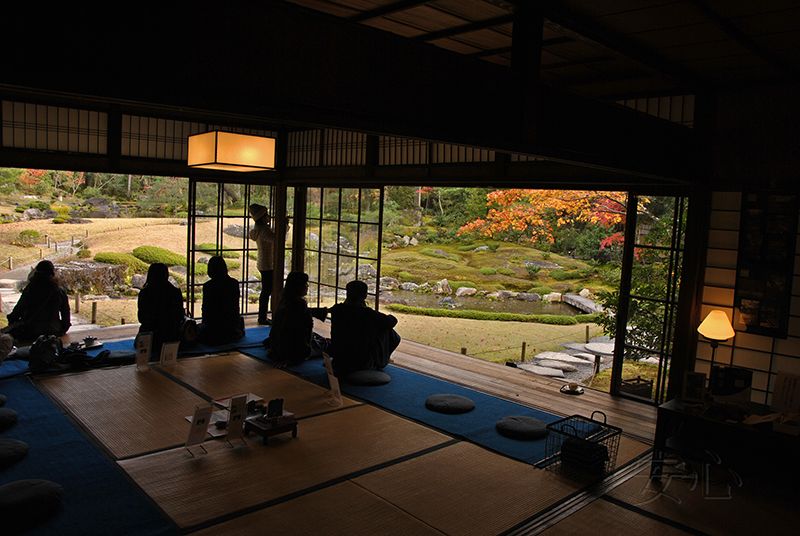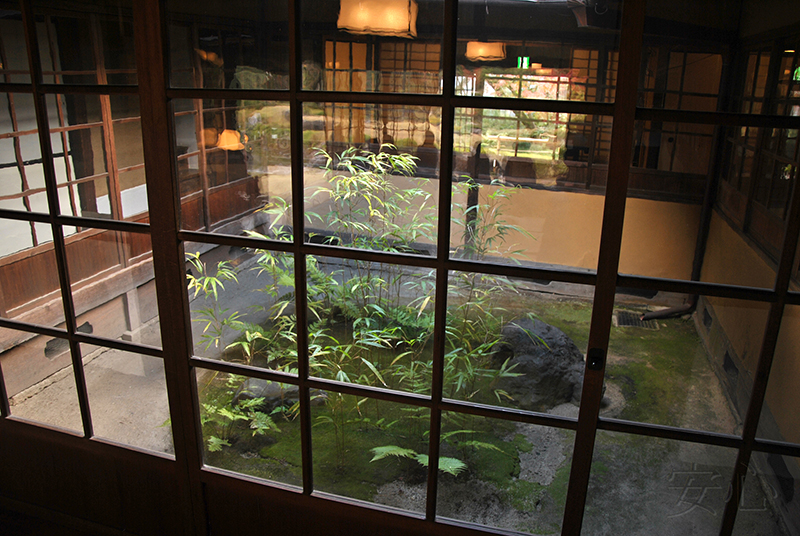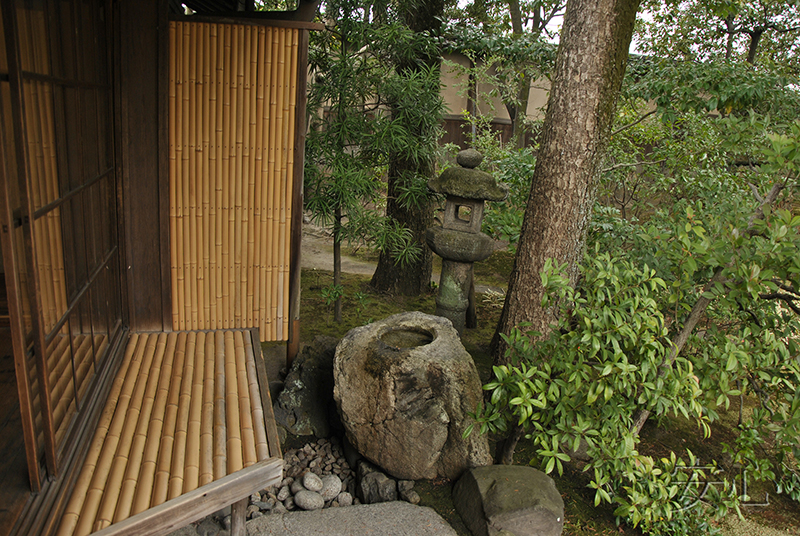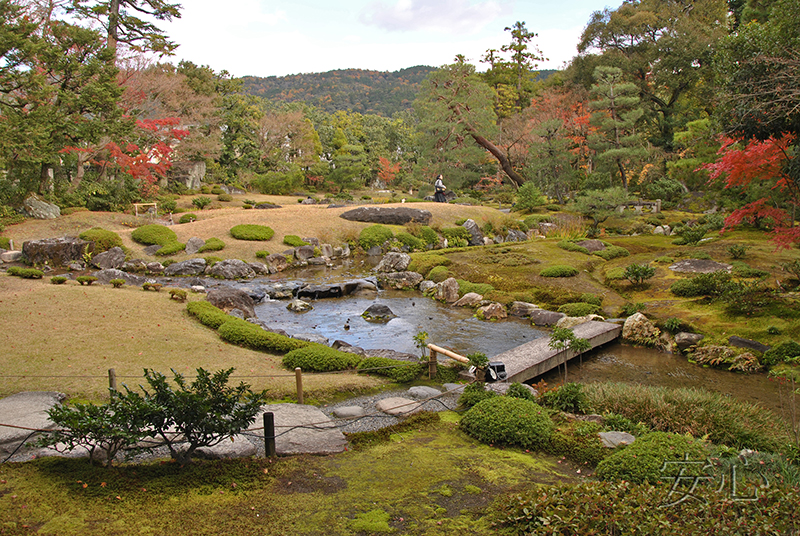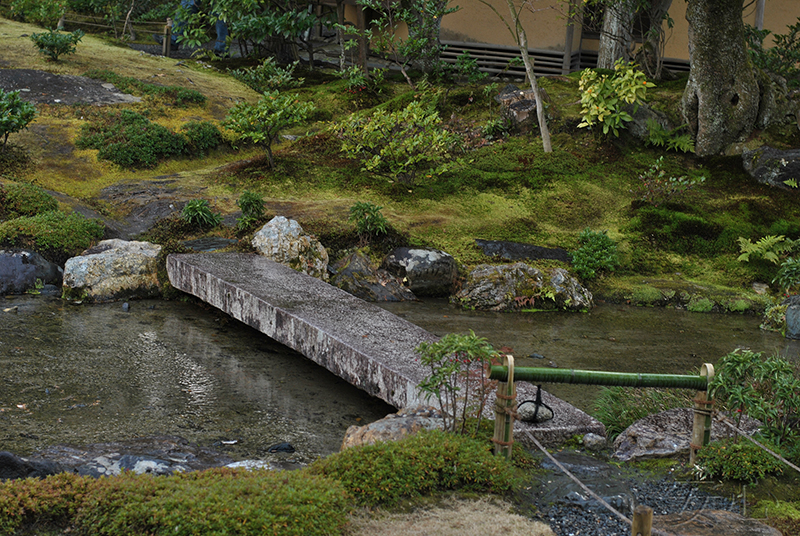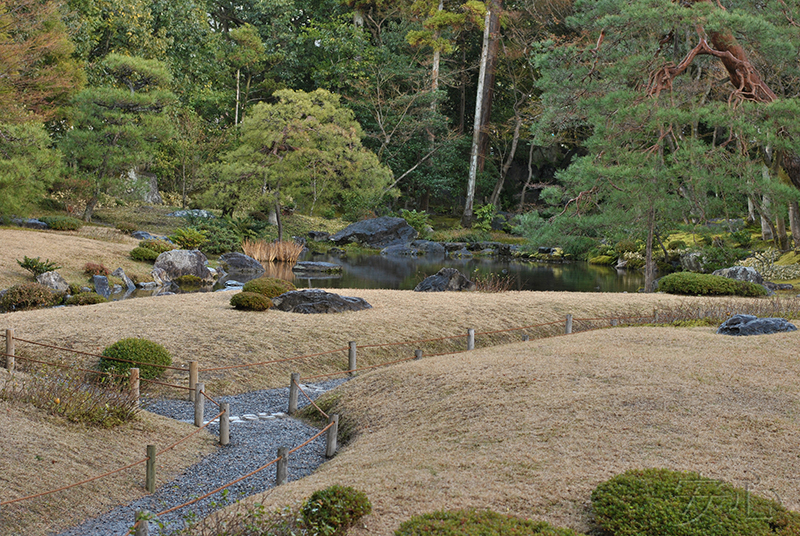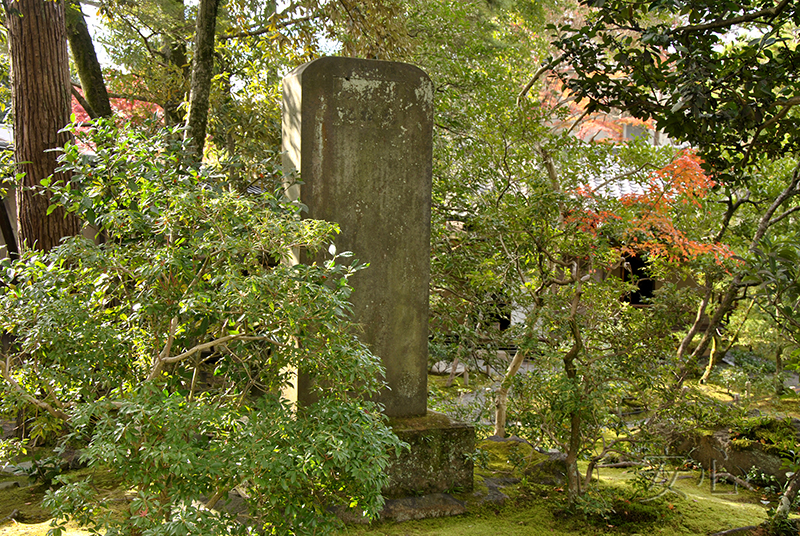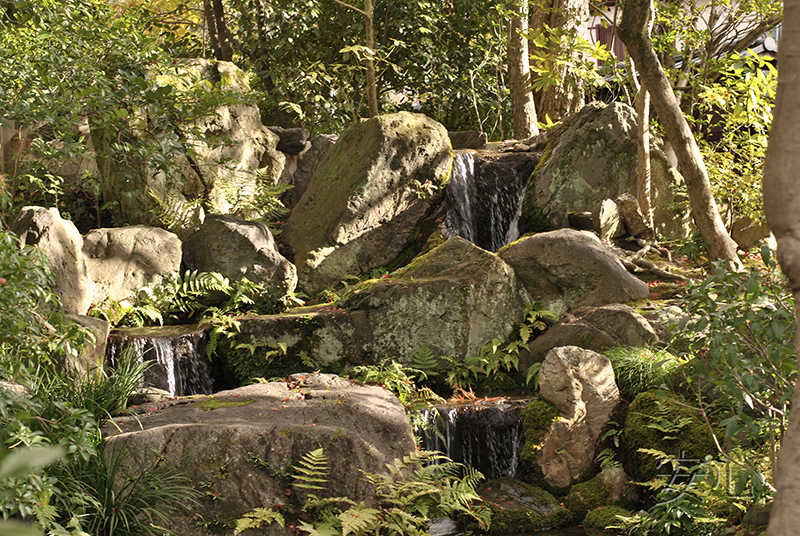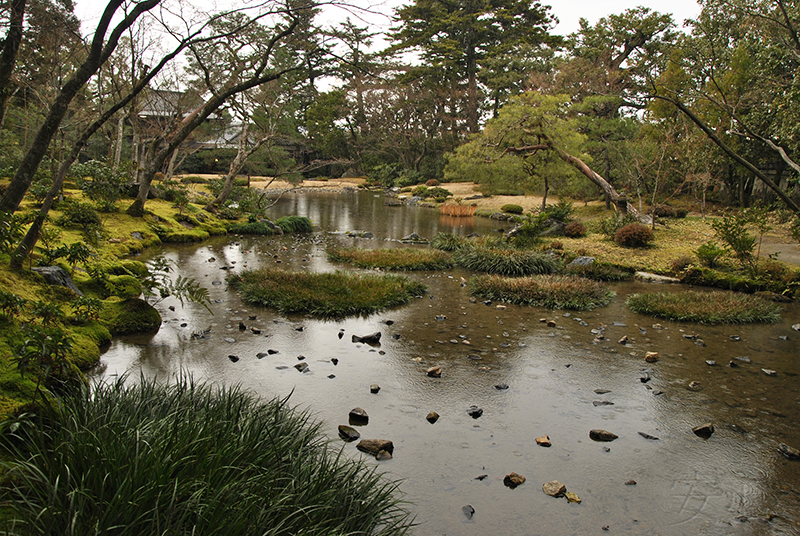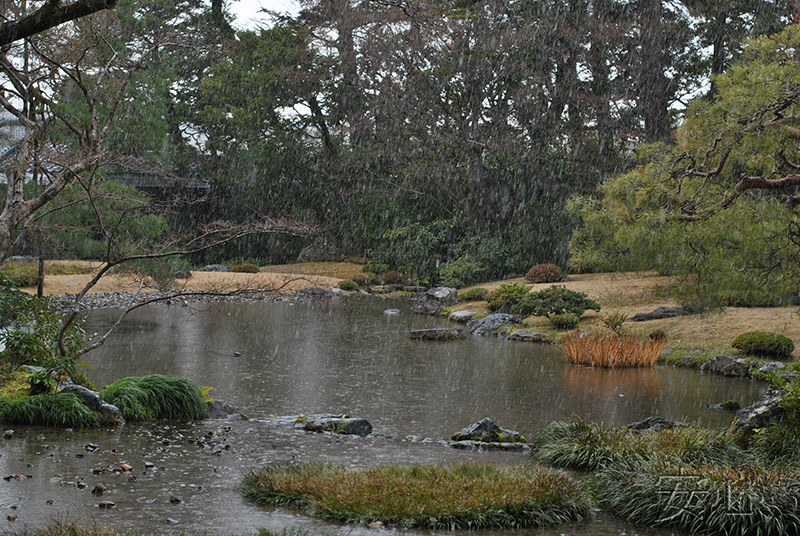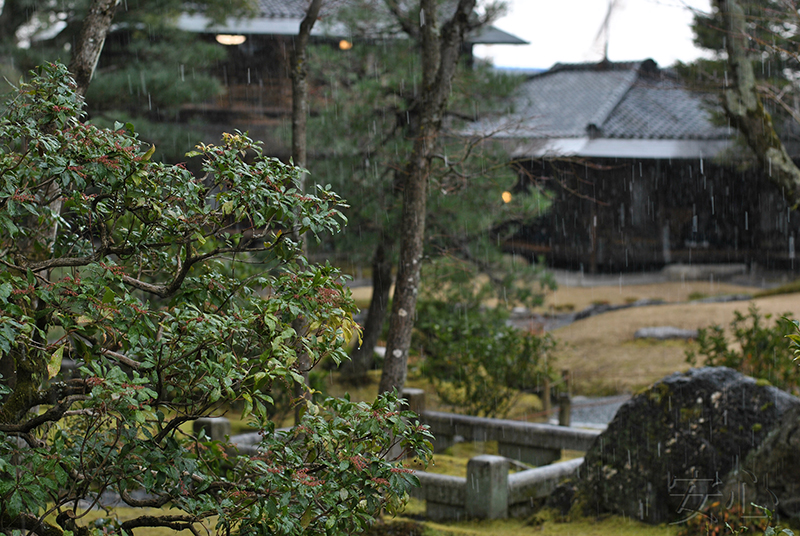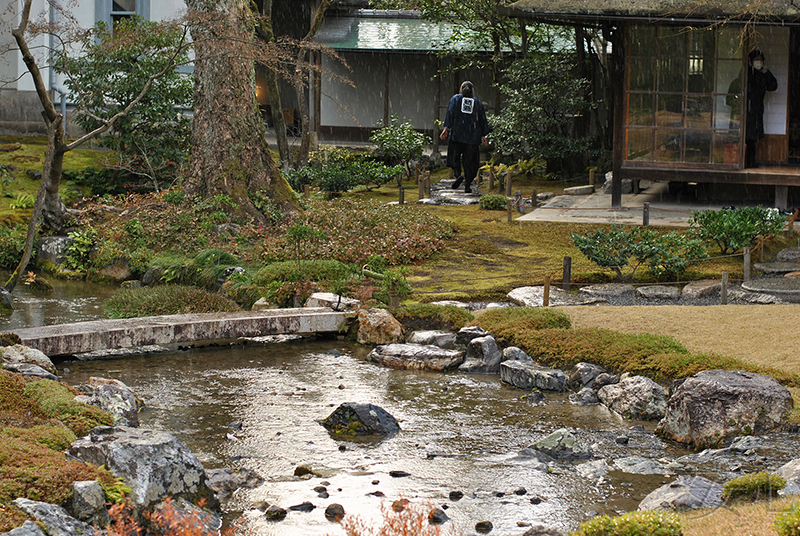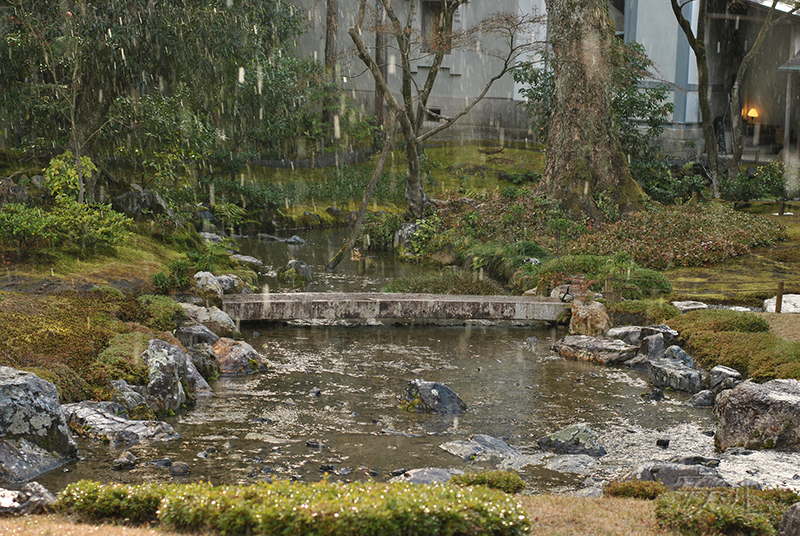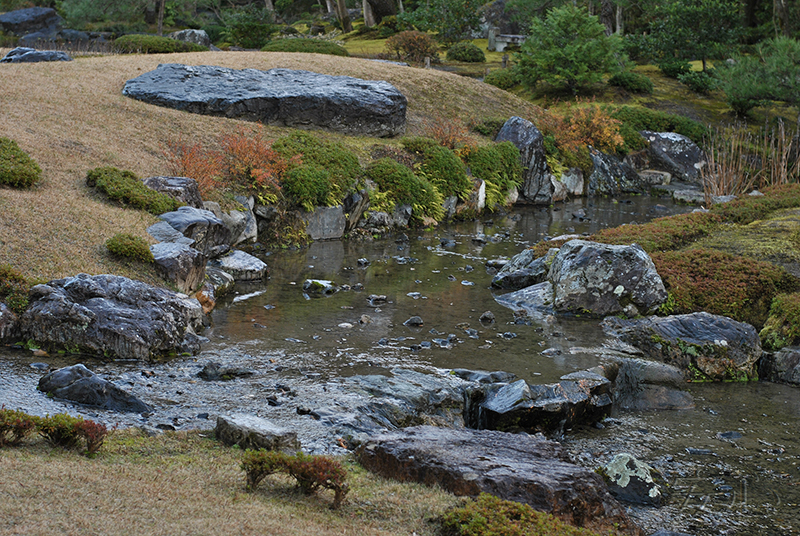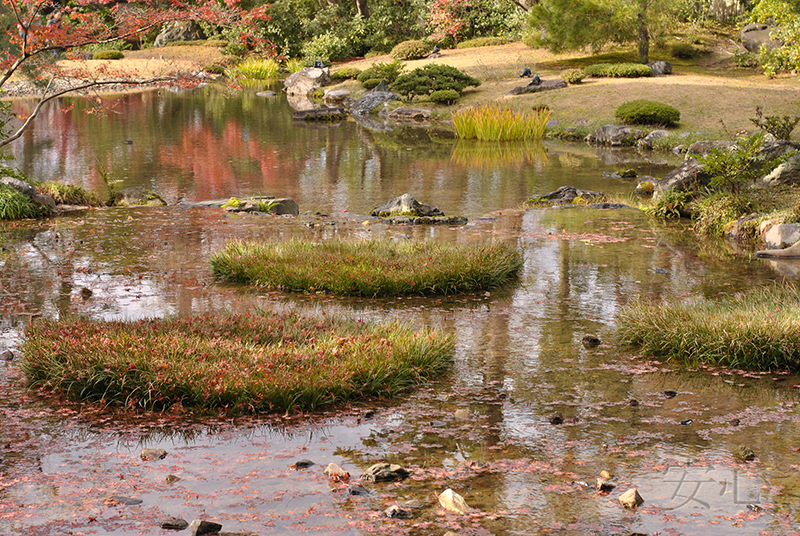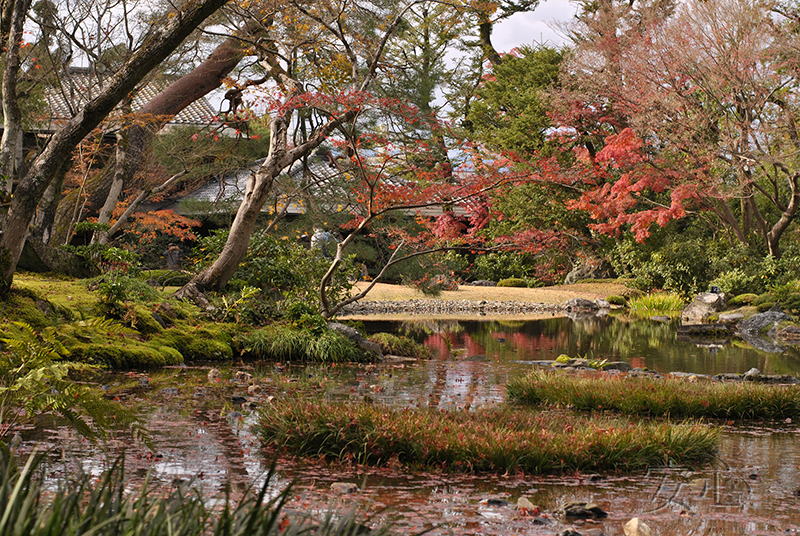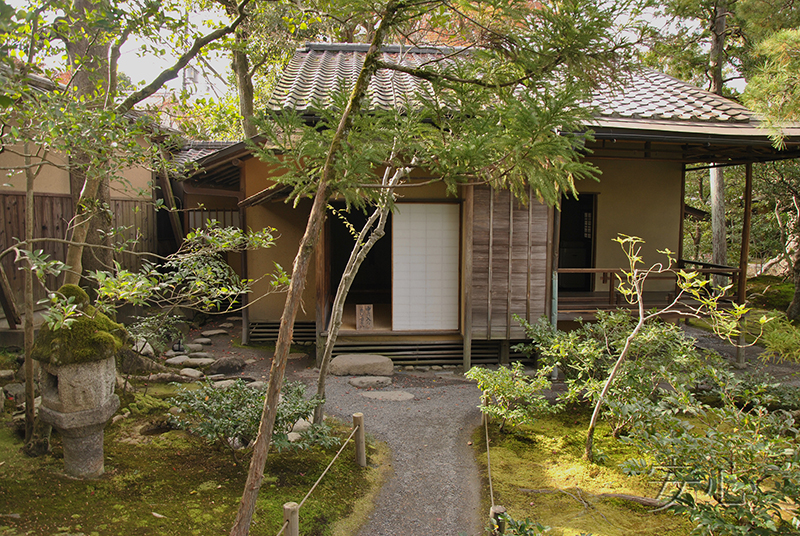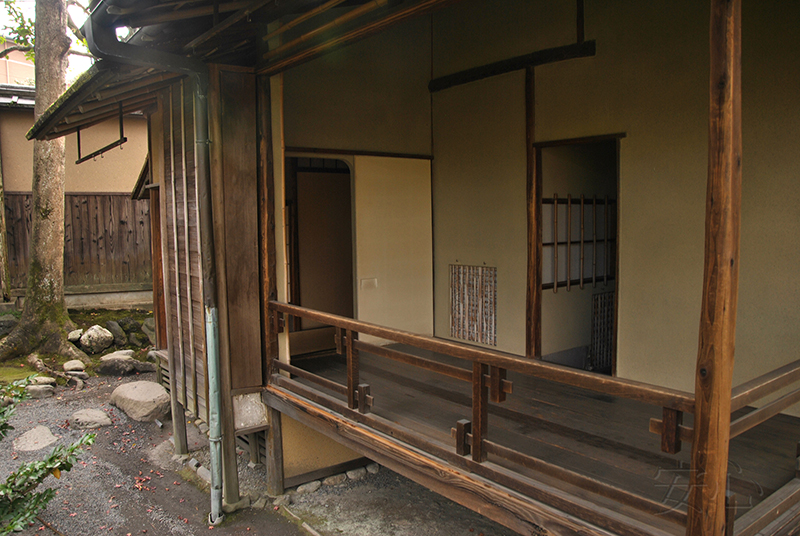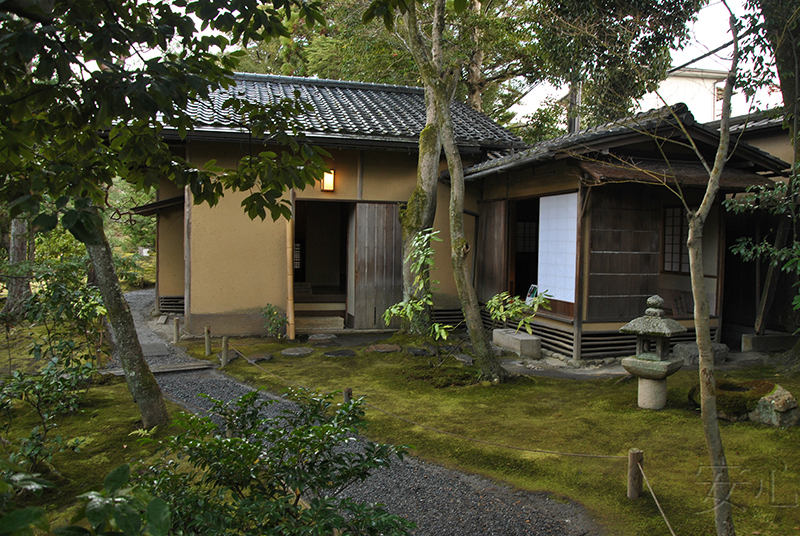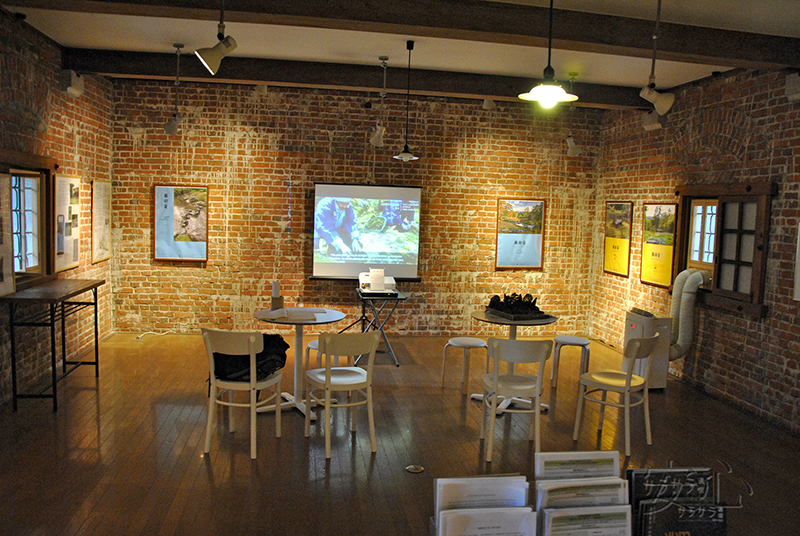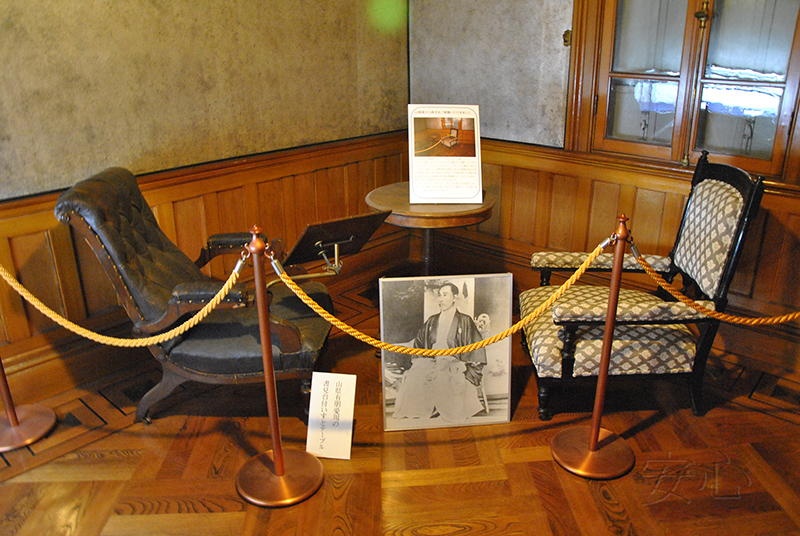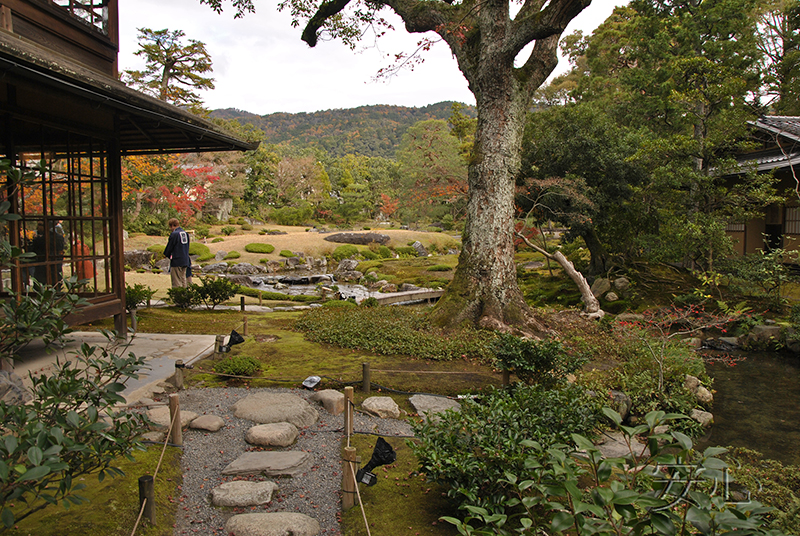
Murin-an garden
This garden interested me, first of all, as the creation of the brilliant landscape designer Ogawa Jihei, a garden of a new style, Western in the eyes of the Japanese, and, at the same time, with Japanese charm. Moreover, earlier, seeing this masterpiece of Japanese landscape art in the photo, I didn't share the enthusiastic reviews. It was all the more interesting to visit there and to see it with my own eyes.
The Murin-an residence belonged to the famous General Aritomo Yamagata (1838 - 1922). Construction lasted for two years, from 1894 to 1896. The general already had a house in Kyoto, and here he planned to create an estate where the headquarters could be assembled to discuss state secret affairs. The location was chosen by Yamagata to provide a view of Mount Higashiyama. However, there was another reason, a canal nearby, laid from Lake Biwa, which allowed powering the complex water system of the garden.
canal from Biwa Lake
Aritomo Yamagata invited the eminent landscape master Ogawa Jihei to build the strolling garden, tasking him with creating a holistic picture of nature, which, unlike the strolling gardens of the Edo era, doesn't copy any famous landscape, but is unique. And Ogawa handled it superbly.
So, early December morning, we arrived to Murin-an, fortunately it was in a 15-minute walk from our hotel.
The first thing that visitors see is a stream that flows under the bridge that connects the two buildings.
On the other side, a tea house is visible through the trees. Despite the fact that the garden is considered Western, this element of the Japanese garden doesn't seem alien at all.
On the left is a traditional Japanese house. The path to the garden goes along this building. Next to the house there are a tall chozubachi bowl and a bench.
The house consists of two buildings. The first one is a two-story, the second has only one floor; in each building you can sit and look at the garden. Unfortunately, in our first visit to Murin-an we had a bad cold, so at a temperature close to zero, we did not risk to take off our shoes and to go into the house.
But the second time, having returned here a year later, but in November, it was warm enough, and we enjoyed looking at the garden from the house.
In addition, there is a small garden inside (tsubo), what you can see only from the house.
There is also a bench and a tsukubai with a lantern at the end of the second building.
Having walked a little forward, we turned around. From this point, all three buildings are clearly visible: on the left is a European house of the early 20th century, on the right are Japanese buildings. Also from here you can see how the path goes. From the Japanese house you need to walk along large stepping stones and cross the stream. After that there is a gravel path.
The garden itself is rather small, only 30 acres, approximately one fourth of the area is occupied by buildings. The shape of the plot, as Nitschke said, "remindes a sweet potato", narrow at the edges and wide in the center. This allowed the designer to create a distant perspective, making the garden appear much larger than it actually is. The Higashiyama Mountains add a chic background.
First you need to go on the left side. The bridge on the right, leading to a small teahouse, is closed.
The part that is in an open, sunny place is covered with a lawn. True, this is not the lawn that we are used to seeing in our gardens, but the short grass zoisia, which does not need a mowing. In winter, it turns yellow and looks like sand from a distance.
If the lawn is the western element of the garden, then the moss growing in shady places is real Japan.
Having reached the middle of the site, we crossed it in the center. And then we went along the right shore of the pond, among the trees drowning in moss. In the thickets of bushes there is a stele stone. It was installed in honor of a visit of this garden of a certain official.
At the end of the path, there is a three-tier waterfall. It is better to cross the stream by stepping stones and to watch it from the other side.
The pond looks especially beautiful from here. Each island, each stone in this shallow water is in its place and protrudes above the water just as much as the author intended. And this is simply amazing. It's hard to believe that the reservoir was created by human!
At this moment, nature gave us with a wonderful surprise, it started snowing. I always dreamed of seeing snow in a Japanese garden, but something fantastic happened in Murin-an! At first, it was a snowfall that turned the garden into a fairy tale.
Then the sun came out, transforming everything around beyond recognition. Snow and sun created the illusion of unreality!
And when the snow was over, the stones shone with unusually bright colors. The most impressive was, of course, a huge stone on the bank of the stream.
And for the sake of completeness, here are a couple of photos of the stream in November, with flaming maple leaves.
On the way back we stopped for a while next to the tea house.
Then we proceeded to the exit. There is a museum in the western building. The first floor is dedicated to the garden and its creator.
There is also a portrait of the author himself, Ogawa Jihei.
The second floor is dedicated to the owner of the house, Aritomo Yamagata, and the famous meeting of four politicians. It is well- known fact, that before the Russian-Japanese War, on April 21, 1903, four political leaders gathered here for negotiations: Aritomo himself, the leader of the Seiyu-kai party Hirobumi Ito, Prime Minister Taro Katsura and Foreign Minister Yutaro Komura. According to newspaper reports at that time, the conference lasted for two hours.
After the museum, I once again took picture of the garden from the entrance, but on the right side of the stream. It is especially clear from here how skillfully intrigue is created. We see only a piece of the garden, only a part of the lawn, wondering what is there, behind the tree, around the bend. And the site seems huge. One gets the impression that the garden goes far to the right, hiding behind the trees. Being in this beauty, silence and tranquility, it is difficult to believe that behind the fence, from all sides, there is a multimillion city. This is a real "hermitage" where you can relax, enjoy the magnificent views, look at the stream or wander along the forest paths.
In my opinion, the only drawback of this garden is its non-photogenic nature. Even the best pictures are unable to capture this unreal beauty. No words can describe the feelings of visitors as soon as they are immersed in the atmosphere of the garden. This garden, like a living organism, envelops, calms, makes you forget about everything in the world. Murin-an, as if feeling that we were not its fans before, tried to show all his best sides, calling on the weather for help. And now for us it has become one of the most beloved gardens, maybe even the most beloved!
Garden Information:
Address: 31 Nanzenji Kusakawa-cho, Sakyo-ku, Kyoto 606-8437
Opening hours:
April - June: from 8.30 a.m. to 6 p.m.
July - August: from 7.30 a.m. to 6 p.m.
September - October: from 8.30 a.m. to 6 p.m.
November: from 7.30 a.m. to 5 p.m.
December - март: from 8.30 a.m. to 5 p.m.
anshin©2011All rights reserved. When using the materials of the site, reference is obligatory.
Proposals for co-operation, as well as comments and suggestions on the site please send to the address: anshinsad@gmail.comtel: +7 (965) 121-80-60, 10am-20pm


